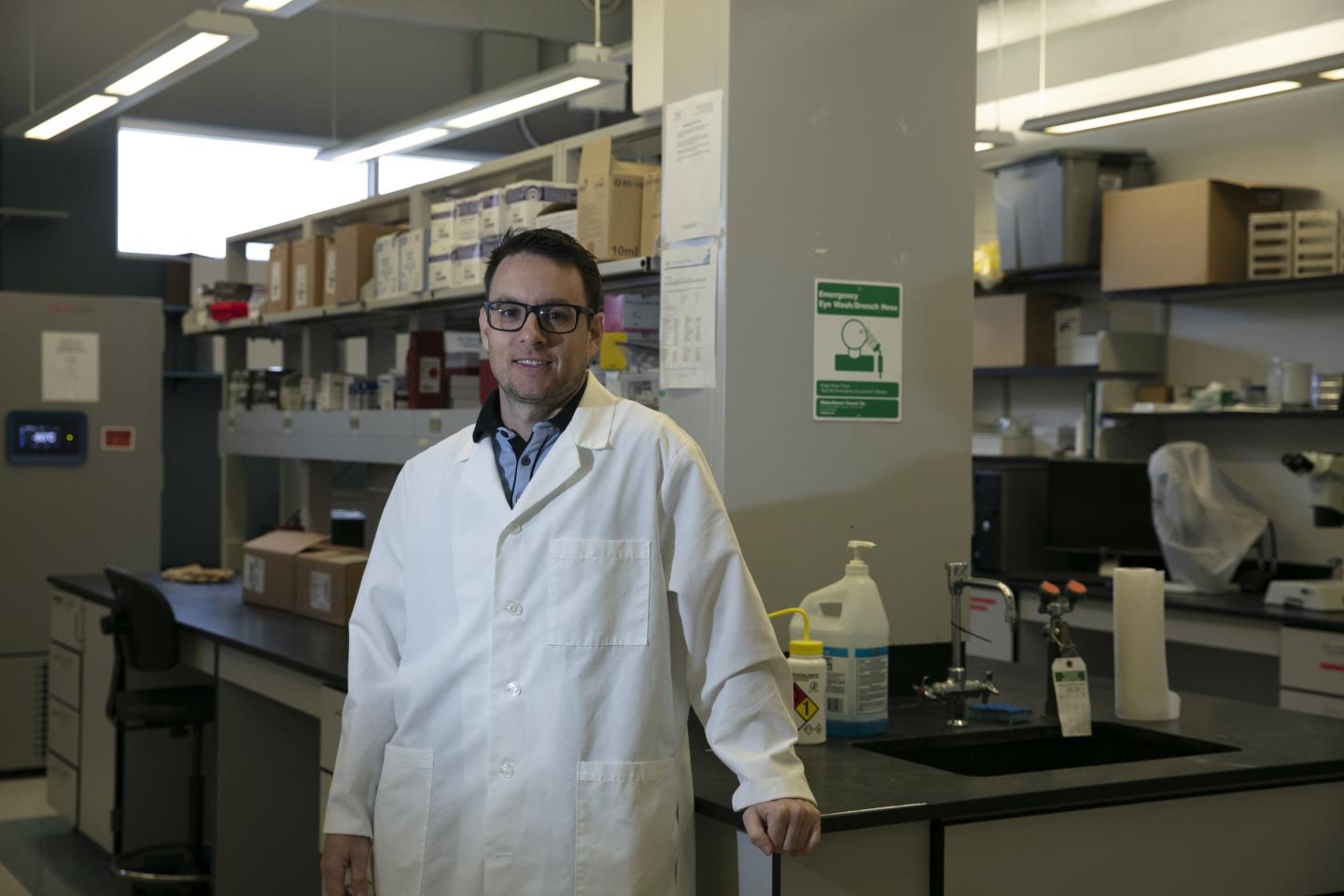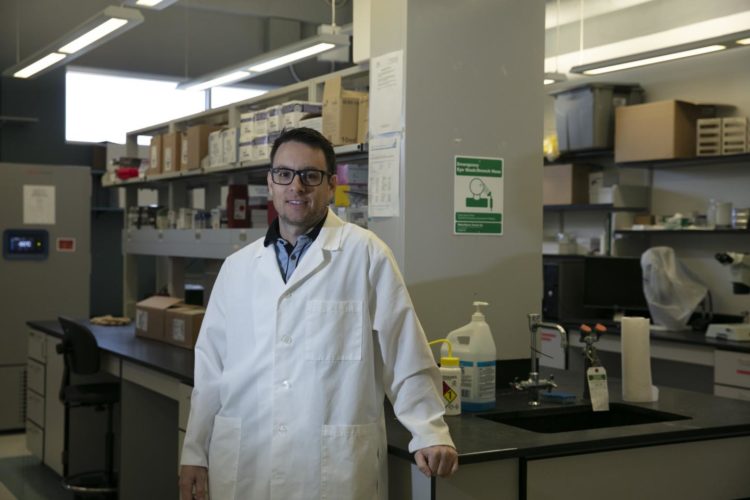Study evaluates fish consumption, sources, risk, knowledge and mercury concentrations in vulnerable population

Credit: Florida Atlantic University’s Harbor Branch
Mercury contamination of the marine environment is a global public health concern. Human exposure occurs primarily by eating seafood, especially large predatory fish such as swordfish and albacore tuna. Those most vulnerable – pregnant women: mercury exposure during pregnancy has been associated with cognitive impairment, including memory, attention, fine motor skills, and other markers of delayed neurodevelopment, although results are conflicting.
Researchers from Florida Atlantic University’s Harbor Branch Oceanographic Institute and collaborators conducted a study to assess mercury concentrations in the hair of pregnant women living in coastal Florida and to determine the relationships between hair total mercury concentrations, fish consumption, sources of seafood, knowledge of the risks of mercury exposure, and seafood consumption during pregnancy.
This latest study follows their previous research showing that bottlenose dolphins in the Indian River Lagoon have some of the highest concentrations of mercury in this species worldwide. The lagoon is an estuary that extends more than 250 kilometers and traverses 40 percent of the eastern coastline in Florida and is a highly impacted environment. To “close the loop” between this wildlife sentinel and human health, they also conducted a prior study in recreational anglers and coastal residents. They found mercury concentrations in the hair of 135 participants that was higher than those previously reported for similar populations in the United States.
“In Florida the average adult consumes almost 10 times as many grams of seafood per day compared to the general U.S. population, potentially increasing the risk of mercury exposure above safe limits, especially for pregnant women,” said Adam M. Schaefer, MPH, lead author, and an epidemiologist at FAU’s Harbor Branch. “Because the sensitivity of the developing brain to the effects of mercury deposition has been shown in studies of pregnant women exposed through the consumption of seafood, even at relatively low levels of prenatal mercury, we wanted to test this vulnerable coastal Florida population.”
Researchers also described the complex relationship between mercury and neurobehavioral outcomes. Specifically, the well-described benefits of seafood consumption and omega-3 fatty acids during pregnancy.
Results of the study, published in the International Journal of Environmental Research and Public Health, show that despite the fact that southern Florida is an area of selective deposition of atmospheric mercury, and that mercury is bioaccumulated in local fish species and apex predators, the mean total hair mercury concentration of the 229 participants was lower or similar to U.S. data for women of child-bearing age. Hair mercury concentration was associated with consumption of locally caught seafood and all seafood, a higher level of education, and first pregnancy.
Those who reported eating seafood three times a week had the highest concentration of mercury in their hair – almost four times as high as those who did not consume any seafood. The highest concentrations were in women over the age of 33 with the highest levels observed among Asian women. Mercury concentrations in hair among those pregnant women who consumed seafood from the Indian River Lagoon were significantly higher than among women who reported never consuming locally caught items. Level of education and the number of children also were related to hair mercury concentration.
Knowledge and education were important components of the study. The majority of participants (85.5 percent) reported being aware that high levels of mercury may be harmful to the unborn fetus. Similarly, 89 percent of women were aware that some fish can contain high levels of mercury. When asked how often one should consume tuna steaks and swordfish, 76.8 percent of women answered that the consumption of these items should be avoided during pregnancy. However, only 53.7 percent of women knew that store-bought swordfish can contain high concentrations of mercury.
“In view of the serious consequences of prenatal exposure to high concentrations of mercury, continued education on safe sources and species of seafood is warranted,” said Schaefer. “Educational efforts must provide a balanced approach to include information regarding the benefits of fish consumption while minimizing risk by avoiding locally caught seafood or fish species known to contain high levels of mercury.”
###
Collaborators of the study are Advent Health in Winter Park; the Division of Comparative Pathology in the Miller School of Medicine at the University of Miami; Pre-Birth Centers of America; and the Department of Environmental and Radiological Health Sciences at Colorado State University. Partial funding for this research was supplied by the Georgia Aquarium.
About Harbor Branch Oceanographic Institute:
Founded in 1971, Harbor Branch Oceanographic Institute at Florida Atlantic University is a research community of marine scientists, engineers, educators and other professionals focused on Ocean Science for a Better World. The institute drives innovation in ocean engineering, at-sea operations, drug discovery and biotechnology from the oceans, coastal ecology and conservation, marine mammal research and conservation, aquaculture, ocean observing systems and marine education. For more information, visit http://www.
About Florida Atlantic University:
Florida Atlantic University, established in 1961, officially opened its doors in 1964 as the fifth public university in Florida. Today, the University, with an annual economic impact of $6.3 billion, serves more than 30,000 undergraduate and graduate students at sites throughout its six-county service region in southeast Florida. FAU’s world-class teaching and research faculty serves students through 10 colleges: the Dorothy F. Schmidt College of Arts and Letters, the College of Business, the College for Design and Social Inquiry, the College of Education, the College of Engineering and Computer Science, the Graduate College, the Harriet L. Wilkes Honors College, the Charles E. Schmidt College of Medicine, the Christine E. Lynn College of Nursing and the Charles E. Schmidt College of Science. FAU is ranked as a High Research Activity institution by the Carnegie Foundation for the Advancement of Teaching. The University is placing special focus on the rapid development of critical areas that form the basis of its strategic plan: Healthy aging, biotech, coastal and marine issues, neuroscience, regenerative medicine, informatics, lifespan and the environment. These areas provide opportunities for faculty and students to build upon FAU’s existing strengths in research and scholarship. For more information, visit fau.edu.
Media Contact
Gisele Galoustian
[email protected]
561-297-2676






